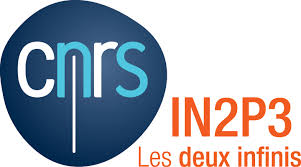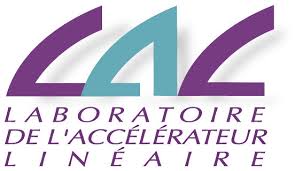Journées de Rencontre des Jeunes Chercheurs 2019
Centre Moulin Mer
(English version, for French see below)
Organised by the sections "Fields and Particles" and "Nuclear Physics" of the Société Française de Physique (SFP), the "Journées de Rencontre des Jeunes Chercheurs 2019" welcomes all PhD students (from the first to the last year) and young postdocs.
This year it will be held from the 24th to 30th November 2019 at the Centre Moulin Mer in Finistère.
The JRJCs are an occasion for each participant to present their work in a convivial atmosphere and to obtain from their colleagues an overview of the current research going on in France in the domain.
This year the following subjects are proposed : - Nuclear Energy - Nuclear Structure and Dynamics - Nuclear Astrophysics - Medical Physics - Hadronic physics - Heavy Ion Collisions - Cosmology - Instrumentation - Standard Model (electroweak) - Beyond the Standard Model - Theoretical Physics - Neutrinos - Astroparticles - Heavy Flavour
The working language of the JRJC is French, but for the non-francophones talks can be given in English. The social program includes, other than an excursion, one or two evening talks which would be open to the general public. For any other information please feel free to contact the secretary or any member of the organising committee (see below). The deadline for registration is the 25th October 2019.
(français)
Organisées par les divisions "Champs et Particules" et "Physique Nucléaire" de la Société Française de Physique (SFP), les Journées de Rencontre des Jeunes Chercheurs 2019 s'adressent à tous les étudiants en thèse (de la première à la dernière année) et aux jeunes post-doctorants.
Elles auront lieu du 24 au 30 novembre 2019 et se tiendront au centre Moulin Mer en Finistère.
Les JRJC sont l'occasion pour chaque participant de présenter ses travaux de recherche dans une ambiance conviviale et de partager avec ses collègues une vue d'ensemble des différentes recherches menées à l'heure actuelle dans sa spécialité et dans des domaines proches.
Les thèmes proposés cette année sont les suivants : - Énergie nucléaire - Structure et dynamique nucléaire - Astrophysique nucléaire - Physique médicale - Physique hadronique - Collisions d'ions lourds - Cosmologie - Instrumentation - Modèle standard électrofaible - Au-delà du modèle standard - Physique théorique - Neutrinos - Astroparticules - Saveurs lourdes
La langue de travail des JRJC est le français, mais les non-francophones peuvent donner leur exposé en anglais. Le programme social comprend, outre une excursion dans la région, une ou deux conférences en soirée pouvant être ouvertes au public. Le date limite d'inscription c'est le 25 octobre 2019. Pour tout renseignement complémentaire, n'hésitez pas à contacter notre secrétariat ou bien un membre du comité d'organisation:
- Pauline Ascher (CENBG) ascher@cenbg.in2p3.fr
- Aoife Bharucha (CPT) Aoife.Bharucha@cpt.univ-mrs.fr
- Francois Brun (CEA Saclay) francois.brun@cea.fr
- Nicolas Chanon (IPNL) nicolas.pierre.chanon@cern.ch
- Emmanuel Chauveau (CENBG) chauveau@cenbg.in2p3.fr
- Isabelle Cossin (LPNHE) cossin@lpnhe.in2p3.fr
- Rachel Delorme (IMNC) delorme@imnc.in2p3.fr
- Romain Gaior (LPNHE) romain.gaior@lpnhe.in2p3.fr
- Julien Masbou (SUBATECH) masbou@subatech.in2p3.fr
- Laure Massacrier (IPNO) massacrier@ipno.in2p3.fr
- Antonio Uras (IPNL) antonio.uras@cern.ch
- Dimitris Varouchas (LAL) Dimitris.Varouchas@cern.ch





